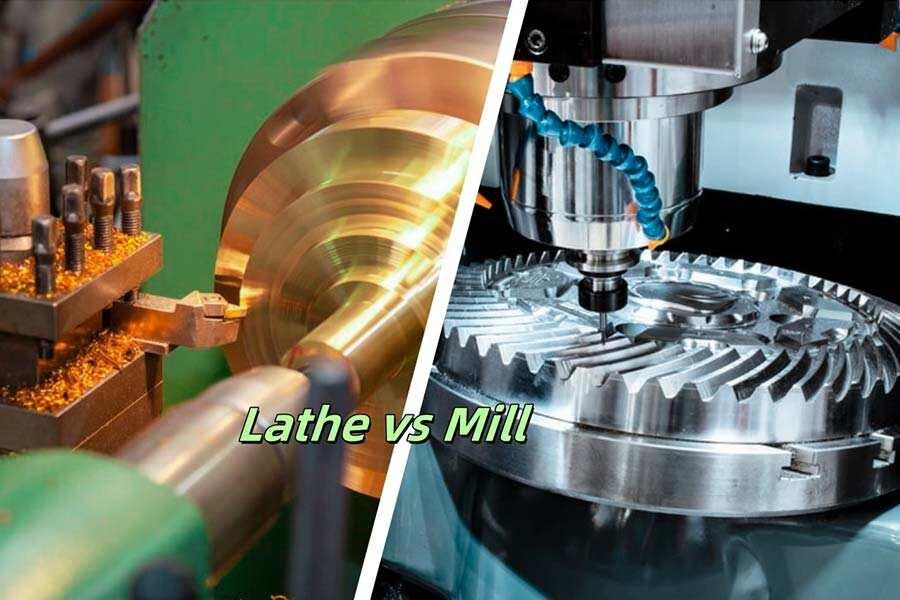Two Giants of the Manufacturing World
You have a design for a precision part in your hand. It could be a round shaft or a square block. Before it can become a reality, it must go through one of the two giants of the machine shop:a lathe or a milling machine. Make the wrong choice and you’ll waste time and money, or even fail to manufacture your design. So how do you know which one to choose?
Lathes and milling machines are the most basic and critical equipment in machining. They each excel in different processing methods and are suitable for different workpiece shapes and process requirements. For those who are new to machining, it may be confusing: Is a lathe more powerful or a milling machine more flexible? In fact, the answer depends on your specific needs.
The key is to understand their essential difference: lathes rotate the workpiece and the tool is fixed;milling machines rotatethe tool and the workpiece is fixed. This fundamental difference determines the areas where each excels and who should be entrusted with your design.
To save you valuable time, here is a quick overview of the core conclusions.
Quick reference: Choose your machining method at a glance
| Features | Lathe | Milling Machine |
|---|---|---|
| Core Action | Workpiece rotation, tool feed | Tool rotation, workpiece feed |
| Core Analogy | Potter’s Wheel | Sculptor’s Dremel |
| Main Processing Shapes | Cylindrical, rotating body (shaft, bolt, thread, etc.) | Square, plane, complex curved surface (housing, gear, slot, etc.) |
| Processing Results | Turning | Milling |
| Typical Applications | Shaft parts, thread, sleeve, tapered parts | Plane milling, keyway, cavity, 3D contour processing |
| Suitable Materials | Metal bars, rotating body blanks | Block metal, plate, complex structural parts |
| Processing Flexibility | Suitable for symmetrical rotating bodies, special-shaped processing is limited | Suitable for complex geometric shapes, multi-axis processing capabilities are stronger |
In one sentence:
Lathe = good at "circle" (rotationally symmetrical parts)
Milling machine = good at "square" (flat, special-shaped parts)
Next, we will analyze their differences in depth to help you make the best choice in actual processing.
Here’s What You’ll Learn
- A simple decision framework to help you decide in 60 seconds whether your project isbetter suited for a lathe or milling machine.
- The corecutting principle differences between the two machines, and why this determines the part shapes they can produce.
- Key comparison dimensions of lathes and milling machines, including number of axes, geometry, tool type and typical applications.
- How modernmulti-functional machining technologies, such as live tooling and mill-turn centers, break down traditional boundaries.
- Practical advice from professional machinists to answer common confusions aboutlathe vs. milling machineselection (FAQ).
Now, let’s dig in and find the best machining method for your needs!
Why trust this guide? A comprehensive perspective from LS Machine Shop
We don't just talk about it on paper, we practice it in the workshop every day:
At LS, we don’t favor any one machine over another; we choose the machine that will be most beneficial to our customers. We own and master both lathes and milling machines. We use afive-axis milling machineto machine complex turbine blades for an aerospace customer, and we use ahigh-precision CNC latheto produce thousands of drive shafts per day for an automotive customer.
This experience enables us to make the most sensible process choices for you:
Faced with a part that is cylindrical but has several key planar features, is it more economical and efficient to choose a lathe equipped with a "powered turret" for compound processing (completed in one clamping)? Or is it more cost-effective to use the traditional sequential processing of "turning first and then milling"?
This is not a theoretical deduction, but a core issue that we must face and accurately answer when planning the process for ourcustomers' CNC turnedand milled parts day after day.
This guide is the crystallization of our wisdom as your reliable manufacturing partner, with our deep sense of responsibility and practical experience for cost and efficiency. It is based on real cases and aims to create real value for you.

How do they cut? The art of spinning vs. the science of carving
Thecore difference between tool cuttingis that the different subjects of movement determine the fundamental difference in processing methods. In simple terms:
Lathe: the workpiece rotates at high speed, and the tool moves fixedly (peeling apples)
Milling machine: the tool rotates at high speed, and the workpiece moves fixedly (carving wood)
Quick comparison chart of key differences
| Features | Lathe (turning) | Milling Machine (Milling) |
|---|---|---|
| Moving body | Workpiece rotation | Tool rotation |
| Tool status | Single-point cutting tool, fixed and non-rotating, linear movement | Multi-edge milling cutter, high-speed rotation |
| Workpiece status | High-speed rotation | Fixed, driven by the worktable X/Y/Z movement |
| Analogies | Peeling apples | Carving wood/drilling |
| Typical features | Cylindrical surface, conical surface, thread, body of revolution | Plane, groove, cavity, complex contour, hole |
Understanding "who is rotating" will grasp the soul of these two basic processing methods. Let's take a closer look at how each of them works:
Lathe:The art of rotating a workpiece (e.g. pottery throwing)
Core mechanism:The workpiece rotates and the tool moves linearly.
Working scenario:Imagine a solid metal bar (workpiece) is firmly clamped in the "chuck" of a lathe. Start the machine and the metal bar begins to rotate at high speed. At this time, a sharp "single-point cutting tool" (shaped like a chisel) is mounted on the tool holder, which does not rotate itself.
Cutting process: The operator (or CNC program) precisely controls this stationary toolto move smoothly along the axis of the rotating workpiece (axial direction, such as turning the outer circle length) or perpendicular to the axis (radial direction, such as controlling the turning diameter).
Material removal:The rotating workpiece surface continuously "meets" the stationary blade. Just like peeling an apple, the cutting edge of the tool "peels" metal chips from the rotating workpiece surface layer by layer and continuously. This process can efficiently create smooth cylindrical surfaces, conical surfaces, end faces, threads, and various complex rotating body shapes that are symmetrical about the central axis.
Milling machine:the science of rotating tools (such as fine engraving)
Core mechanism:the tool rotates and the workpiece moves linearly.
Working scene:Imagine a square or any shape of metal blank (workpiece) is firmly fixed on the workbench. At this time, a multi-edge tool called a "milling cutter" (commonly known as end mills and end mills) is installed on the spindle. Start the machine and the milling cutter starts to rotate at high speed.
Cutting process:The workbench (or the spindle head itself) on which the workpiece is fixed can move in the horizontal plane (X, Y direction) and vertical direction (Z direction) driven by precise guide rails. The operator (or CNC program) controls the workbench (or spindle) to carry the workpiece and perform precise relative movement relative to thehigh-speed rotating milling cutter.
Material removal:The high-speed rotating multi-edge milling cutter is like an extremely precise "engraving drill". When it contacts the stationary (or slowly moving) workpiece, its sharp multiple cutting edges cut into the material in turn, breaking the material into fine chips and taking it away. By controlling the complex path movement (straight lines, curves, contours) of the workpiece relative to the rotating tool, planes, steps, grooves, cavities, holes and extremely complex three-dimensional surfaces can be processed.
Remember this core picture: Is the workpiece spinning on the lathe and being cut by the tool, or is the tool spinning on the milling machine to cut the fixed workpiece? The answer to this "who is spinning" is the key to revealing the essential difference between turning and milling.
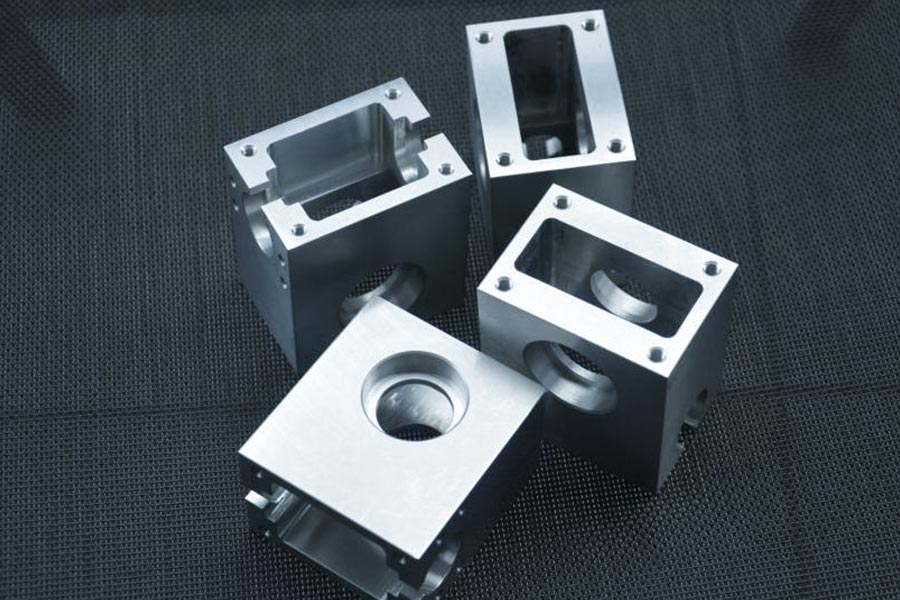
Turning vs. Lathe, Milling vs. Milling Machine, and the Role of “CNC”
Core clarification:
Turning is a metal cutting operation.
Lathe is a machine to perform turning.
Milling is another metal cutting operation.
Milling machine is a machine to perform milling.
CNC (Computer Numerical Control) is not a separate category of machine, but an advanced means of machine control. It may be applied on lathes and milling machines (and other machine tools) in order to turn them intoCNC lathes and CNC milling machines.
1. Lathe and Turning
(1) Turning (process):
The workpiece is the primary motion because it rotates, and the cutting tool makes a straight line or a specific shape path to perform feed motion.
Processed object: Mainly used to process rotating body feature components, like cylinders, cones, end faces, threads, grooves, etc. Shaft, sleeve, disc parts, flange, threaded rod, etc., are some examples of ordinary components.
Essence of cutting:The cutting tool removes material from the surface of the turning workpieceto provide the desired shape and size. The workpiece is the drive source of rotation.
(2) Lathe (machine):
Core function: Provide and accurately control the motion required for the turning operation:
Spindle: Clamping workpiece and rotating it at high speed (main or chief motion).
Tool Post/Turret: Clamping and mounting the cutting tool.
Carriage/Saddle: Tool holder which can move along the bed rails parallel to the spindle axis (longitudinal feed - Z axis) or at right angles to the spindle axis (lateral feed - X axis).
Tailstock: Holds the other end of a long workpiece (usually fixed or drillable), provides a center or holds tools such as drills.
Equipment and process relationship:Lathe is an equipment specifically designed to achieve the turning operation. It is not possible for the turning operation to be effectively achieved without a lathe. The lathe design, method of motion and attachments are all tailored towards the demands of turning.
2. Milling and Milling Machine
(1) Milling (process):
Core motion: Rotation of the cutting tool (milling cutter) is the main motion, the workpiece is mounted on the worktable, and the worktable moves in a linear path or programmed contour path to carry out feed motion (against the rotating tool).
Processing object: Primarily used to process planes, grooves, gear teeth, complex contour surfaces, cavities, etc. Typical examples of parts include molds, boxes, brackets, plate parts, complex-contour parts, etc.
The nature of cutting: Rotating multi-edge tool cuts material from the workpiece surface of relatively stationary or moving. Rotation is supplied by the tool.Milling has the ability to produce very dissimilar geometric forms.
(2) Milling Machine (Equipment):
Main purpose: Provide and accurately regulate the motion required for the milling process:
Spindle: Support and turn the milling cutter at high speed (primary motion). The spindle can usually travel along the vertical axis (vertical milling machine) or swivel in multiple axes (universal milling machine).
Table: Clamp and fix the workpiece. The table can move precisely three orthogonally perpendicular directions (X-axis: left to right, Y-axis: front to back, Z-axis: upward and downward - usually through the spindle head or the lifting table) to achieve complex feed motion.
Column & Knee - lifting table milling machine: Hold the table and spindle head, and achieve Z-direction movement.
Interaction of equipment and process:Milling machine is specially utilized equipmentin order to attain the milling process. The structure of the milling machine (especially the multi-axial movable table/spindle head) and the high-power spindle system are designed to meet the complex demands of tool rotation and multi-directional movement of the workpiece during the milling process. It is difficult to attain the milling process (especially complex shape processing) without using a milling machine.
3. Character and purpose of "numerical control" (CNC)
(1) Fundamental definition:CNC (Computer Numerical Control) refers to a machine control method or system. Computers (or special-purpose controllers) are utilized to store, interpret and execute programmed code instructions (G codes, M codes, etc.) in letter, number and symbol form, thereby controlling automatically the motion and action of machine tools.
(2) Function (inapplication to lathes and milling machines):
Automation: Replaces the traditional manual operation (rocker handle) or mechanical automation using cams and templates. The machine tool runs automatically according to the program, and the operator's concern is mainly clamping the workpiece, setting the tool, starting the program, and monitoring the process. Cylinder boring based on numerical control.
High precision and reproducibility: The human error is eliminated by computer control, and servo motors and high-precision ball screws/linear guides can move with micron-level accuracy. The identical program can replicate the same parts the infinite number of times.
Processing of intricate shapes: Easily produce intricate curves, surfaces, and three-dimensional contour processing (such as mold cavities and impeller blades) that are close to impossible to manually finish. With multi-axis linkage control (such as3-axis, 4-axis, 5-axis milling machines,turning and milling compound), the operations are stronger.
Flexibility: It is possible to change the processed parts simply by modifying the program and tool (sometimes involving fixtures), without exchanging complicated mechanical devices (for example, cams), thus significantly reducing the product conversion time and applicable for multi-variety and small-batch production.
Efficiency enhancement: It can maximize cutting parameters (cutting speed, feed rate, cutting depth), minimize idle stroke, and perform high-speed machining, and it is able to operate unmanned (must be equipped with relevant automation systems), greatly increasing productivity efficiency.
Integration: CNC system is the digital core connection of new-generation digital manufacturing (CAD/CAM/CAPP/CAE). After the part has been designed (CAD), computer-aided manufacturing (CAM) software generates the processing program (NC code) and directly transmits it to theCNC machine toolfor execution.
(3) Indispensable explanation
CNC is not a class of machine: You cannot simply say "go buy a CNC." You need to specify if you are buying a "CNC lathe" (CNC Lathe) or a "CNC milling machine" (CNC Milling Machine) or otherCNC machine tools (e.g., CNC grinders, CNC wire cutting, etc.).
CNC is an "enabling" technology: It is a technological refinement of the control system of previous generations of machine tools (lathes, milling machines, drilling machines, grinders, etc.).A manual lathe or milling machinecan be turned into a CNC lathe or CNC milling machine by fitting it with a CNC control system (which includes computers, servo drives, servo motors, position feedback devices, operating panels, etc.).
Distinguish hardware and control systems: Identify that lathes/milling machines are a piece of hardware, whereas CNC (CNC) is the head and nervous system that drives an apparatus. A machine tool's fundamental principles can be universalized to different types of machine tools.
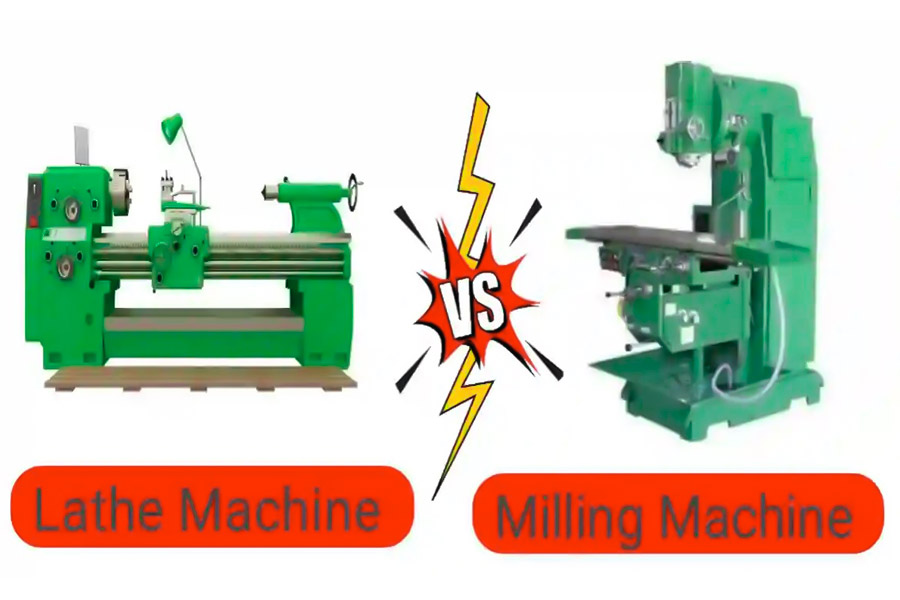
Lathe vs. Milling Machine Complete Comparison
Lathes and milling machines are the most basic and crucial categories of machine toolsin mechanical processing. There are elementary distinctions in their operational principles, processing functions and applicable scenarios. It is necessary to learn these differences in order to choose appropriate processing equipment.
| Comparison Dimensions | Lathe | Milling Machine |
|---|---|---|
| Core Processing Principle | The workpiece rotates, and the tool feeds and cuts along a fixed path | The tool rotates, and the workpiece is fixed on the worktable and moves |
| Main motion | The workpiece rotates | The tool rotates |
| Feed motion | The tool moves along the X/Z axis | The workpiece moves along the X/Y/Z axis (or the tool moves) |
| Typical processing objects | Rotary parts (shafts, disks, sleeves) | Planes, grooves, and complex contour parts (boxes, molds, etc.) |
| Main processing features |
|
|
| Typical part examples | Shafts, flanges, bolts, bushings | Mold cavities, racks, gear boxes, keyway parts |
| Tool type | Turning tool (single-point tool) | Milling cutter (multi-point tool: end mill, face mill, etc.) |
| Workpiece clamping method | Chuck, center, faceplate | Vise, pressure plate, special fixture, rotary table |
| Processing freedom | Usually 2 axes (X/Z) | 3 axes start (X/Y/Z), expandable to 4 axes/5 axes |
| Material removal efficiency | ⭐⭐⭐⭐ High-speed cutting of rotating body | ⭐⭐⭐ High efficiency for plane, slower for complex shapes |
| Processing accuracy | ⭐⭐⭐⭐ High-precision roundness/cylindricity | ⭐⭐⭐ High-precision plane/position |
| Operation complexity | ⭐⭐ Relatively simple | ⭐⭐⭐⭐ More complex programming and clamping |
| Applicable production types | Large batch of rotating body parts | Small batch of complex parts, customized processing |
| Core advantages | High efficiency, high precision and low cost of rotating body processing | High geometric flexibility, can process complex and special-shaped parts |
| Key limitations | Only suitable for axisymmetric features | The efficiency of processing rotating body is lower than that of lathe |
💡 Selection suggestions:
Axles, discs, sleeves and others need processing → Lathes are preferable
Plane, grooves, three-dimensional surfaces need processing → Milling machines are preferable
Heavily mixed and complicated parts → Consider turning and milling machine tools
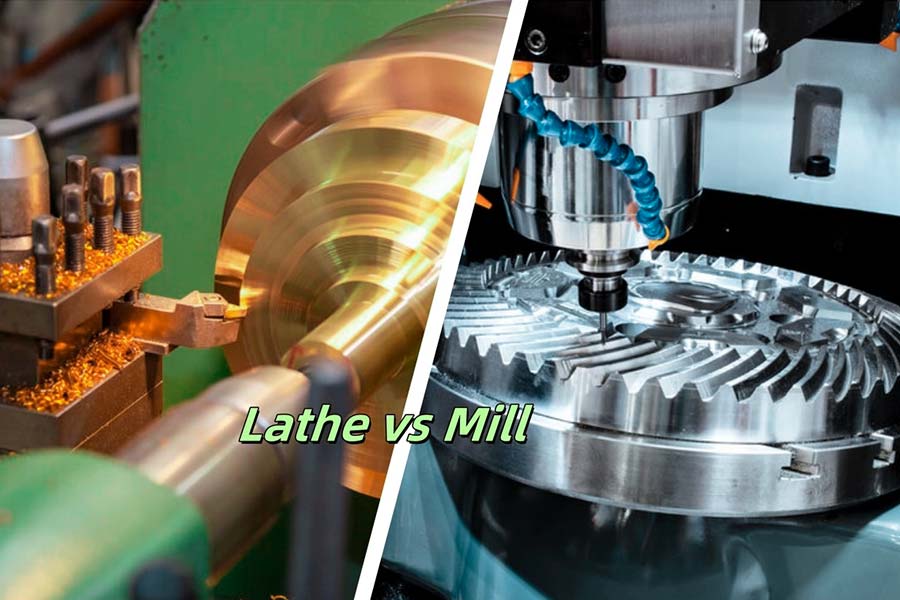
When the lathe gets to know milling: powered turret and milling center
"In modern manufacturing, theboundaries between lathes and milling machines are blurring." This is a true slogan of one of the most powerful modern metalworking trends - the consolidation of machining centers. The old turning (rotation of a workpiece) and milling (rotation of a tool) operations, traditionally distinct from each other in different machine tools, today become increasingly closely coupled by technologies.Power turret lathes and turning-milling composite centersare the standard representatives of this "cross-border integration". They have transformed the production of complex parts, step by step bringing into reality the dream of "one clamping, complete all processing", and greatly increasing efficiency, precision and flexibility.
1. Power turret: milling extension of lathe
Structural features:
Combine an independently rotatable power head (electric drive) on the CNC lathe turret.
Mode of processing: The workpiece is stopped when the turning is reversed, and the power head drives themilling cutter/drill to mill, drill, and perform other operations.
Principal advantages:
Eliminate clamping: simultaneous turning and milling operations to avoid benchmark error.
Improve efficiency: minimize handling time and secondary clamping time.
Optimize cost: minimize equipment investment and floor space.
Restrictions:
Only suitable for light milling (shallow grooves, shallow planes, drilling).
Processing region limited to the end face of the workpiece or the region around the chuck.
No linkage capability in several axes (merely positioning milling).
Beneficial applications: shafts, disc sleeve components (with keyways, flat surfaces, etc.).
2. Combined turning and milling center: the final union
Structural elements:
Turning core: high-speed lathe spindle (C axis).
Milling core:
B-axis swing head: 360° continuous rotation of milling spindle, in any position.
Multi-axis linkage (X/Y/Z/B/C axis), permits five-axis machining.
High-capacity tool magazine: top-level automatic turning/milling tool changing.
Core advantages:
Absolute precision: eliminate multiple clamping errors altogether.
Absolute efficiency: one-stop turnaround of all processes for complex parts.
Absolute flexibility: accommodate multi-angle feature parts (e.g., impellers, precision joints).
Challenges
High cost: much more expensive than traditional equipment.
High level of expertise: extremely advanced programming, operation, and upkeep.
Beneficial conditions:high value-added complex components (aerospace, medical precision parts).
3. Summary comparison
| Dimension | Power turret lathe | Milling and turning center |
|---|---|---|
| Essence | Lathe upgrade (additional milling function) | New fusion platform |
| Milling capability | Light milling, positioning processing | Heavy cutting, five-axis linkage surface processing |
| Cost | Low (about 1.3-2 times of traditional lathe) | Very high (can reach several times of ordinary machining center) |
| Applicable parts | Rotary parts with simple process | Extremely complex polyhedron parts |
| Core value | Cost-effectiveness Expand the process range | The ultimate solution to complete the entire process in one clamping |
Trend: Continuous technological advancement promotes manufacturing industry to evolve towards high efficiency, precision and flexibility.
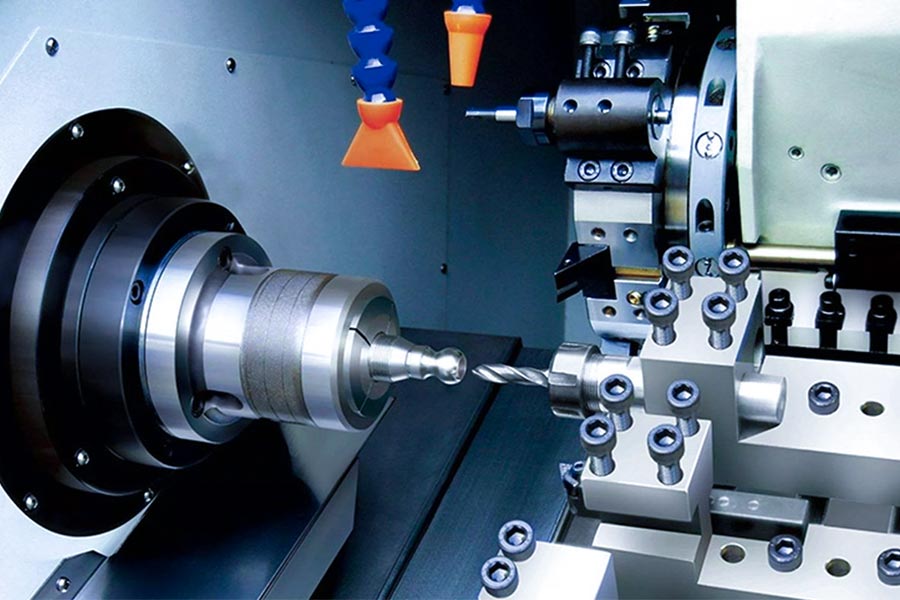
FAQ- Answer all your questions about workshop equipment
1. Do I buy a lathe or a milling machine first?
The answer to this question depends on your specific processing needs. If you mostly produce rotating parts such as shafts, discs, sleeves, etc., a lathe is preferable as it is more efficient in turning external circles, internal holes and threads. If you need to deal with planes, grooves, complex contours or non-symmetric parts, a milling machine is more suitable. For studios or start-ups on a limited budget, it's recommended that you should prioritize the types of parts that you will be processing most frequently over the next 3-5 years. In the meantime, you can also look at lathes with powered turrets that can accomplish some milling functions while still retaining turning capability, providing greater processing flexibility.
2. Can a lathe do everything a mill can?
The common lathe can't completely replace the function of a milling machine because it is mainly used for rotary body processing and it is difficult to achieve the milling of complex contour, plane or asymmetry features. However, a CNC lathe with a powered turret can perform some simple milling operations such as drilling, end milling and keyway processing. More sophisticated turning and milling centers are capable of true five-axis machining, which includes almost all of the milling machine operations, but such equipment is expensive and is generally suitable for mass production of high-precision, complex parts. For most general processing needs, milling machines are still more versatile and less expensive.
3. What are the shortcomings of lathes and milling machines?
The main limitation of lathes is that they are good at machining rotationally symmetrical parts, but they are weak in machining non-rotating bodies or complex contours. Even with a powered turret, their milling range is limited by Y-axis travel and rigidity. Although milling machines are more flexible in geometry, they are not as efficient as lathes when machining long-axis or high-precision rotating parts, and the setup and programming are usually more complicated. In addition, the purchase and operation costs of milling machines (especially five-axis models) are often higher than those of lathes of the same level. Therefore, when choosing equipment, it is necessary to weigh the processing needs, budget and long-term production planning. Composite processing equipment can make up for the shortcomings of both to a certain extent, but the investment cost is higher.
Summary
There is no ‘better’ lathe or milling machine, only ‘better’. Lathes are the kings of round parts, while milling machines are masters of square and complex shapes. Understanding their fundamental differences is the first step to choosing the right manufacturing process for your project.
You don’t need to be a mechanical expert to decide how your part should be made. Leave that challenge to us. LS engineers will analyze your design and select the most efficientand cost-effective machining path for you - whether it is pure milling, turning, or a combination of the two. Upload your CAD file now, get an instant quote and professional manufacturability analysis, andlet us bring your ideas to life with the right machine!
📞 Phone: +86 185 6675 9667
📧 Email: info@longshengmfg.com
🌐 Website:https://lsrpf.com/
Disclaimer
The content of this page is for informational purposes only.LS SeriesNo representations or warranties of any kind, express or implied, are made as to the accuracy,completeness or validity of the information. It should not be inferred that the performance parameters, geometric tolerances, specific design features, material quality and type or workmanship that the third-party supplier or manufacturer will provide through the LS network. This is the responsibility of the buyerAsk for a quote for partsto determine the specific requirements for these parts.please Contact us Learn more information.
LS Team
LS is an industry-leading companyFocus on custom manufacturing solutions. With over 20 years of experience serving more than 5,000 customers, we focus on high precisionCNC machining,Sheet metal fabrication,3D printing,Injection molding,metal stamping,and other one-stop manufacturing services.
Our factory is equipped with more than 100 state-of-the-art 5-axis machining centers and is ISO 9001:2015 certified. We provide fast,efficient and high-quality manufacturing solutions to customers in more than 150 countries around the world. Whether it's low-volume production or mass customization,we can meet your needs with the fastest delivery within 24 hours. chooseLS TechnologyIt means choosing efficiency, quality and professionalism.
To learn more, please visit our website:www.lsrpf.com



